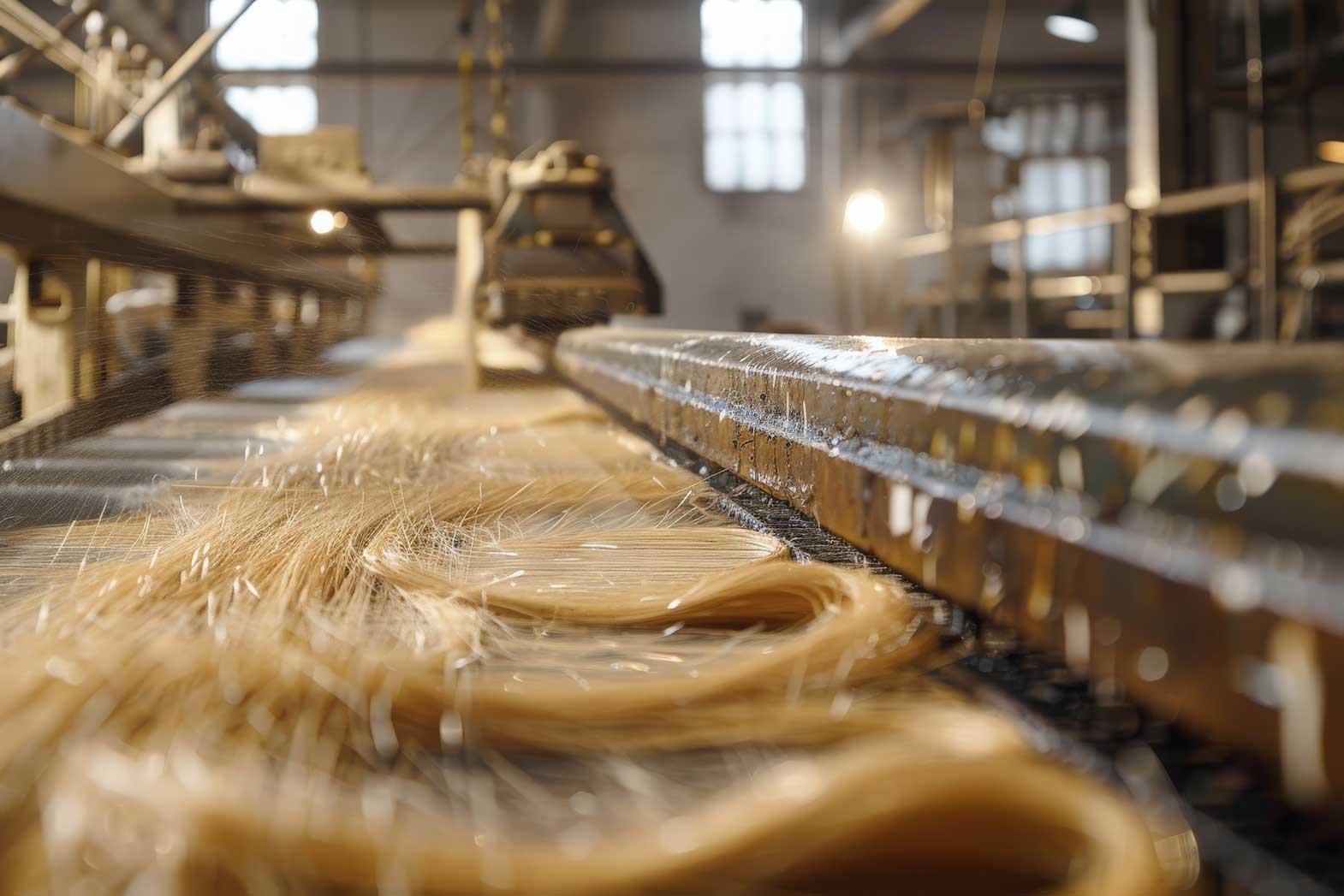Bamboo fiber is the new natural and eco-friendly textile material of the 21st century. Bamboo fabric is gaining popularity due to its exceptional properties and is 100% biodegradable. It is said that "Bamboo fiber comes from nature and returns to nature in the end."
Bamboo is a sustainable resource as it grows quickly in good conditions without using pesticides. Bamboo is not a wood but a grass. Therefore, unlike normal trees, it does not take decades to grow and mature. Within 4-5 years, it gets matured and ready for harvest. The matured bamboo is extraordinarily durable and strong. After harvest, the bamboos are taken to the mills.
Here, they are immersed in sodium hydroxide solution which dissolves the bamboo cellulose. In the next step, carbon disulfide is added, and later fibers are drawn out from it. These fibers are cleaned, bleached, and dried in the final step. This is how long, white, and strong fibers are made from the bamboo pulp.
Properties of bamboo fabric
People find bamboo fabric very soft and light compared to other fabrics. This is because of its excellent properties which make it best suitable for textile manufacturing. Bamboo fabric almost feels like silk. The fabric is breathable and cool when worn. Also, it absorbs more water than the usual fibers like cotton and polyester.
As bamboo fiber is bestowed with extraordinary properties, it has the strength of steel. The fiber has inherent shine and anti-bacterial properties. This property is maintained even when woven. Also, it prevents the buildup of static electricity compared to other fabrics.
It outshines other fabrics with its natural deodorizing property, to keep oneself odor-free. It prevents abrasion and is extremely permeable. The fabrics made from bamboo are tagged best quality; they meet all the yardsticks of quality standards.
Further, its antibacterial and absorbent property can be best utilized in intimate apparels, as it does not stick to the skin like cotton and protect children and pregnant women from infection. Bamboo fabric is also cool to wear in summers. Intimate apparels like socks, underwear, bathing suits, bathrobes, sleepwear, T-shirts, etc. are manufactured.
The non-woven bamboo fabric, which is similar to the viscose fibers, is used in industrial applications. There is a bio-agent called 'bamboo kun' in the bamboo which is resistant to bacteria and diseases. Therefore, it is used to make sanitary napkins, food packages and face masks for both industrial and medical purpose.
It comes as no surprise that bamboo fabric is used in medical and sanitary products due to its anti-bacterial characteristic. However, this is not the only reason for it to be used for medical supplies. It is light, soft, durable and is non-allergic, compared to the other expensive fabrics in the market. The fabric is used in making different products such as sanitary towels, gauze, bandages, absorbent pads, surgical wear, medical masks, doctor's coat, etc.
Bamboo fabrics have many useful features that can create a healthy atmosphere at one's home. It is widely used in making sheets, pillows, drapes, blinds, sofa cover, bed skirts, mattress, etc. In today's time, pollution affects people who even stay inside the house. Using bamboo fabrics in the bedroom is much of a help as it keeps allergens away. Its absorptive and deodorizing properties ensure that the bed is dry and odor free.
There are some beneficial products made from bamboo fabrics which are used in the bathroom. Hand towels, body towels, bath sheets, tub mats, bath rugs, shower curtains, etc. are some of the products. It is best as it absorbs water quickly. It prevents bacteria buildup on the towels, and keeps odor at bay, keeping the bathroom dry and clean.
Advantages of bamboo fabric
Due to the destruction of the ozonosphere, there is more exposure to ultraviolet rays, which causes skin cancer. But, wallpaper and curtains made from bamboo fibres can absorb ultraviolet rays. Also, decorative products made from it do not become moldy due to dampness.
Bamboo fibres are built in cross-section and have numerous micro holes which allow air ventilation and better moisture absorption. Due this structure, the fabric can absorb sweat almost in seconds. From the tests conducted, it has been proven that apparels made from bamboo fibres are always few degrees lower in temperature compared to normal fabrics. It has a natural air-conditioning effect.
It has been proved that bamboo fibre fabric retains its anti bacterial properties, even after it is washed fifty times. As this feature is natural, it does not cause skin allergy unlike other fabrics. The whole process of producing the fibres is without any pollution. Therefore, the decomposition process does not harm the environment.
There is a high demand for bamboo products in the global market. The main challenge for the bamboo industry is to cater efficiently to this growing demand. According to the reports published in October 2012, the global market for bamboo was $12 billion in 2012 and is expected to reach $20 billion by 2015.
Catering to half of the worlds needs, China is the largest producer of bamboo at present. Philippines is among the top countries in exporting bamboo products in the world. It is competing to become the second largest producer of bamboo and its products by 2020. Other major producers of bamboo are India, Indonesia, Laos, Vietnam, Ethiopia, Brazil, Chile, Peru and Ecuador. The demand for bamboo products is growing, as more and more people are turning towards "green products" globally.
The merits of bamboo for its use in textile are innumerable. Its exceptional features and functionality is attracting many designers to experiment with this fabric. In the near future, one can expect to see more bamboo products displayed in the stores.
References:
1. Ecoplanetbamboo.net
2. Bamboogrove.com
3. Interaksyon.com
4. Bamboofabricstore.com.au
5. Indiantextilejournal.com









Comments